February 6, 2023
The University of Michigan’s US Consumer Sentiment gauge rebounded +8.7% in December to 64.9, though that is still down -3.4% from a year ago.
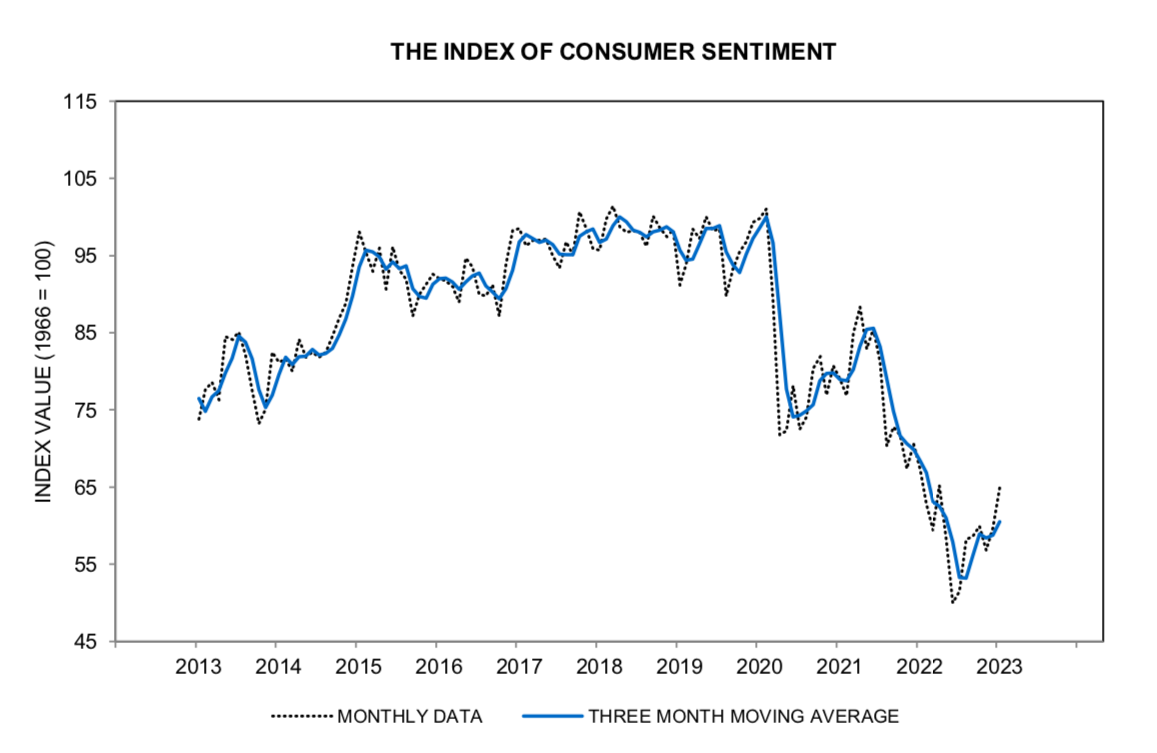
The Conference Board’s US Consumer Confidence index fell -1.9 points in January to 107.0, and remains noticeably below pre-Covid levels.
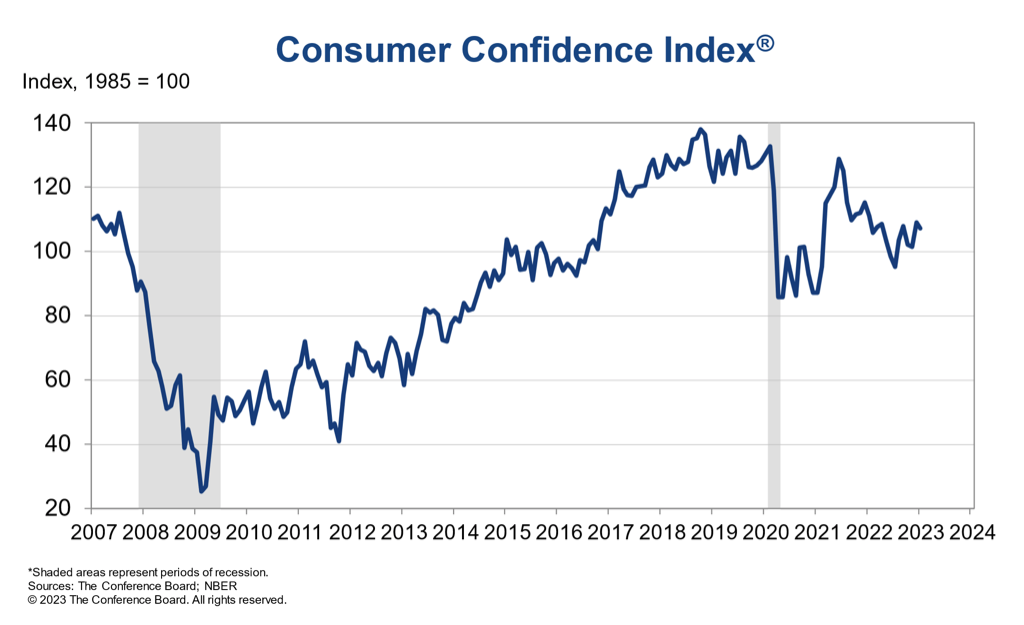
In January, 20.2% of consumers surveyed by the Conference Board said business conditions were “good,” up from 19.2% in December. 19.2%, said business conditions were “bad,” down from 19.7%. 48.2% of consumers surveyed said jobs were “plentiful,” up from 46.4%, while only 11.3% of consumers said jobs were “hard to get,” down from 11.9% in December.
Personal incomes rose +0.2% m/m in December, up +4.6% from a year ago. However, this is unadjusted for inflation. Taking inflation into account, real disposable personal incomes rose +0.2% m/m in December, but were down -1.7% from a year ago.
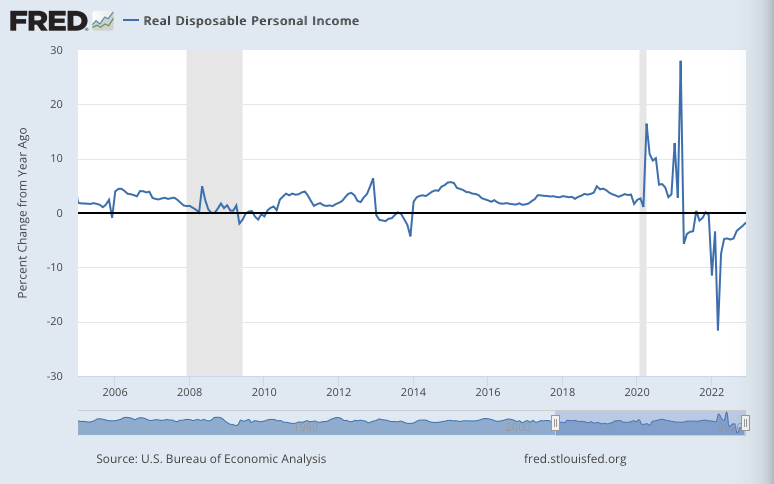
Consumer spending fell -0.2% m/m in December, but was still up +7.4% from a year ago. However, most of this gets eaten up by inflation (with PCE running at +5.0% y/y). So real spending was down -0.3% m/m in November, up only +2.2% from a year ago.
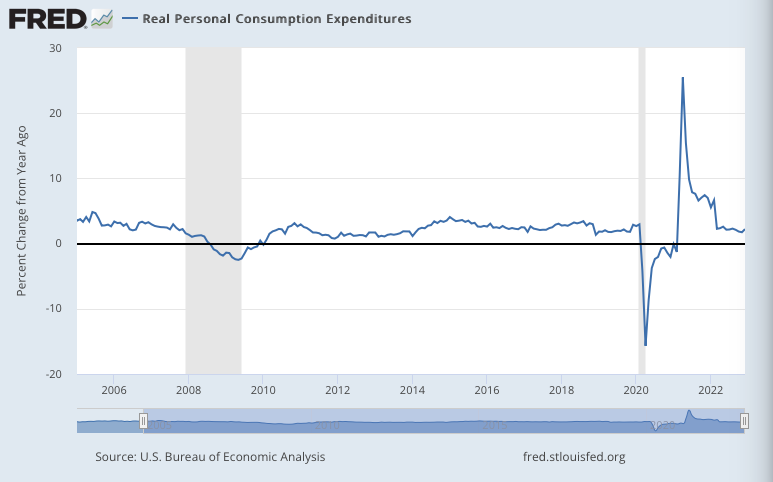
The US personal savings rate rose in December to 3.4%, up from a near-all-time low of 2.4% in September.
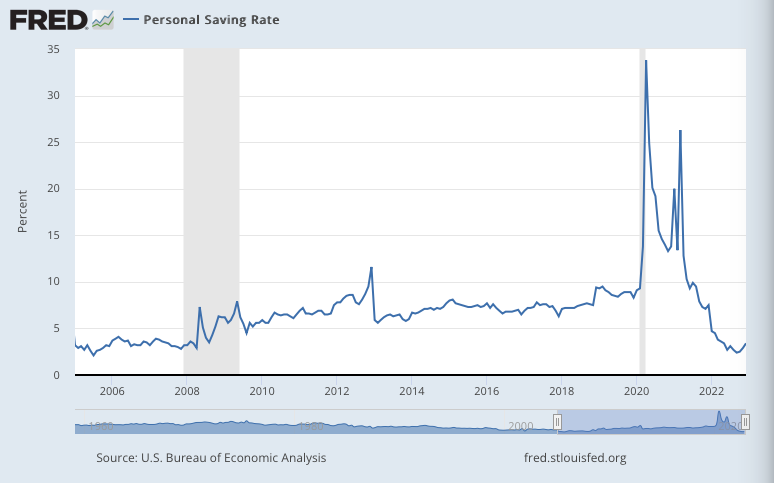
U.S. consumers stockpiled significant savings during Covid, though it’s unclear how evenly distributed they are across income levels. The present drawdown on these savings bears watching.
Leave a Reply